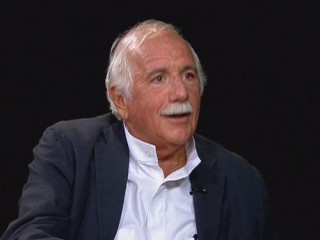
Moshe Safdie biography
Date of birth : 1938-07-14
Date of death : -
Birthplace : Haifa, British Mandate of Palestine
Nationality : Canadian
Category : Arhitecture and Engineering
Last modified : 2012-01-17
Credited as : architect, urban designer, Author
9 votes so far
Safdie graduated from McGill University, with a degree in architecture, in 1961. After apprenticing with Louis Kahn in Philadelphia, he returned to Montreal to oversee the master plan for Expo '67. In 1964, he established his own firm to undertake Habitat '67, an adaptation of his McGill thesis. Habitat '67, which pioneered the design and implementation of three-dimensional, prefabricated units for living, was a central feature of Expo '67 and an important development in architectural history. He was awarded the 1967 Construction Man of the Year Award from the Engineering News Record and the Massey Medal for Architecture in Canada for Habitat '67.
In 1970, Safdie opened a branch office in Jerusalem, starting an involvement with the rebuilding of that city that eventually included the Yitzhak Rabin Center, the Holocaust History Museum at Yad Vashem and a large mixed-use development in Mamilla. In 1978, after teaching at McGill, Ben Gurion, and Yale universities, Safdie moved his main office to Boston and became director of the Urban Design Program at Harvard University's Graduate School of Design, until 1984. From 1984 to 1989, he was the Ian Woodner Professor of Architecture and Urban Design at Harvard.
Since the early 1990s, Safdie, a citizen of Canada, Israel, and the United States, has focused on his architectural practice, Safdie Architects, which is based in Boston and has branches in Toronto, Jerusalem, and Singapore. In that time, Safdie has designed six of Canada's principal public institutions as well as many other notable projects around the world, including the Salt Lake City Main Public Library, the Khalsa Heritage Centre in India, the Marina Bay Sands integrated resort in Singapore, the United States Institute of Peace headquarters in Washington, DC, the Kauffman Center for the Performing Arts in Kansas City, and the Crystal Bridges Museum of American Art in Bentonville, Arkansas.
Roll of honour: Punjab Chief Minister honoured Israeli architect Moshe Safdie on 25 th. Nov. 2011 at the inauguration ceremony of the Khalsa Heritage Museum. He said Safdie had studied Sikh religion for two years before designing the heritage museum. Safdie said he wanted the museum to look 300 years old and he thought he had succeeded in this objective.
Moshe Safdie's works are known for their dramatic curves, arrays of geometric patterns, use of windows, and key placement of open and green spaces. His writings and designs stress the need to create meaningful, vital, and inclusive spaces that enhance community, with special attention to the essence of a particular locale, geography, and culture.
Publications
Safdie:
-Beyond Habitat (1970)
-For Everyone A Garden (1974)
-Form & Purpose (1982)
-Beyond Habitat by 20 Years (1987)
-Jerusalem: The Future of the Past (1989)
-The City After the Automobile: An Architect's Vision (1998)
-Yad Vashem - The Architecture of Memory (2006)
















